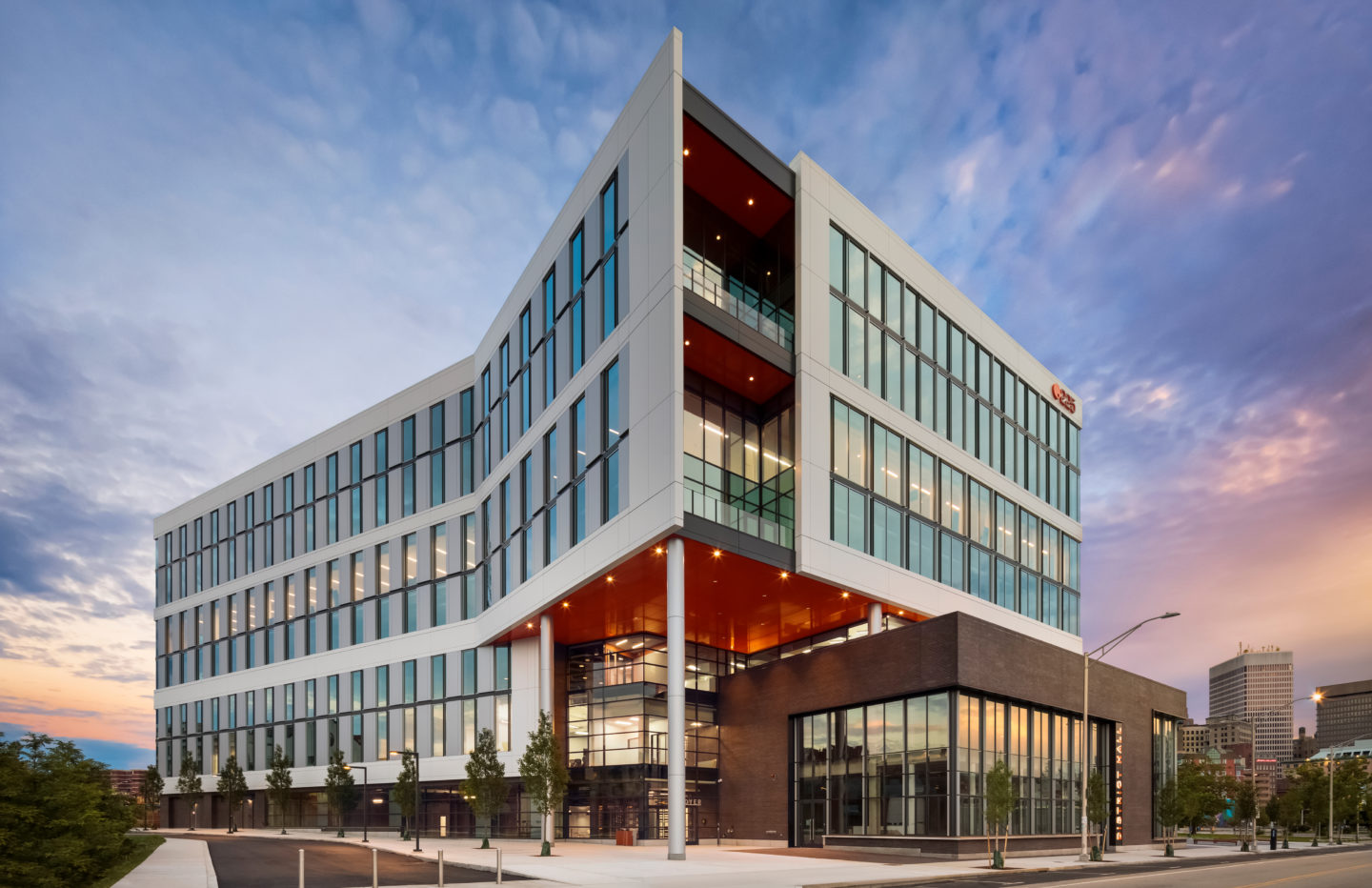Multi-tenant, flexible wet lab space will add much-needed capacity for life sciences research and help to attract new commercial tenants.
To meet the growing demand for wet laboratory space in Providence, driven by an expanding array of life sciences activity in the city’s Innovation and Design District, Wexford Science & Technology, LLC, will transform 62,000 square feet at its Point 225 building into highly sought-after wet lab-ready research space.
Brown University will lease approximately 31,000 square feet of the new lab space, with the remainder available for lease by commercial life sciences companies. The space is expected to deliver in late 2023. John Luipold, Brown’s vice president for real estate and strategic initiatives, said the lease marks the largest lease commitment for new space in Providence in 2022.
“For Brown, this new investment is an important demonstration of our commitment to the city and to ever greater innovation activity in the Jewelry District,” Luipold said. “Providence has a growing presence in the life sciences, and the ability to locate Brown laboratory space in close proximity to commercial ventures focused on health and medicine comes with significant promise for increased economic activity and the kinds of research breakthroughs that can result from collaboration and partnership.”
Wexford will transform the sixth and seventh floors of its building, located at 225 Dyer St., into lab-ready space, with Brown leasing the sixth floor for a period of 10 years. The Point 225 building’s other floors are already home to Brown’s School of Professional Studies, Johnson & Johnson offices, and dozens of companies located in CIC Providence.
Point 225 opened in July 2019, with support from the state’s I-195 Redevelopment District Commission and Rhode Island Commerce, and features a variety of space options for companies, as well as gathering spaces, programming and the popular restaurant Bayberry Garden. The creation of wet lab-ready space will expand the appeal to life sciences companies by reducing the time necessary to build out a tenant’s laboratories.
“One of the trends we are seeing in the industry is a need for companies to accelerate the timeline in establishing new lab capabilities and operations,” said Gregg Herlong, Wexford’s vice president and Providence market executive. “Installing the critical building infrastructure and systems to create lab-ready spaces and the groundbreaking research that Brown will conduct in their space will make Point 225 and Providence more attractive to a wider range of life sciences companies.”
For Brown, the additional floor at Point 225 will support the need for expanded space for health and medical research, particularly as the University embarks upon a high-impact plan to significantly increase investment in research that benefits communities locally, nationally and globally. It also continues the University’s investments in projects focused on adding vibrancy to the Jewelry District, with a particular focus on scientific and biomedical research with the potential to create new economic activity in the city and state.
“These new lab spaces made possible by Brown University and Wexford Science & Technology will strengthen the life sciences research and development ecosystem in Providence and make the State of Rhode Island even more attractive to companies looking for lab space in proximity to impactful university research,” said Carol Malysz, executive director of Rhode Island Bio, the region’s trade association focused on the life sciences. “Most importantly, Rhode Island will finally have the chance to bring medical and scientific excellence to the forefront to foster innovation and entrepreneurship, impacting the health of our citizens.”
In addition to anchoring Point 225 with its School of Professional Studies, Brown also has 400 employees at South Street Landing, which was developed by Wexford in collaboration with CV Properties. Additionally, the University’s Warren Alpert Medical School, Laboratories for Molecular Medicine and School of Public Health are nearby, and this summer Brown began work toward planning an integrated life sciences building in the Jewelry District.
Russell Carey, executive vice president for planning and policy at Brown, said those projects are contributing to a more vibrant neighborhood, both economically and in regard to on-the-ground activity like eating in local restaurants and shopping at stores — and adding additional people to Point 225 will do the same.
“Point 225 and South Street Landing are tax-generating properties playing a major role in bringing new life to a neighborhood that not long ago sat largely empty, and Brown’s partnerships to date with Wexford have proven successful both for the University and for the neighborhood,” Carey said. “We value the opportunity to continue to serve as a catalyst for new commercial investments in Providence as we simultaneously position biomedical researchers at Brown to make an even greater impact in contributing to improved health care, patient outcomes and solutions for pressing health challenges.”

